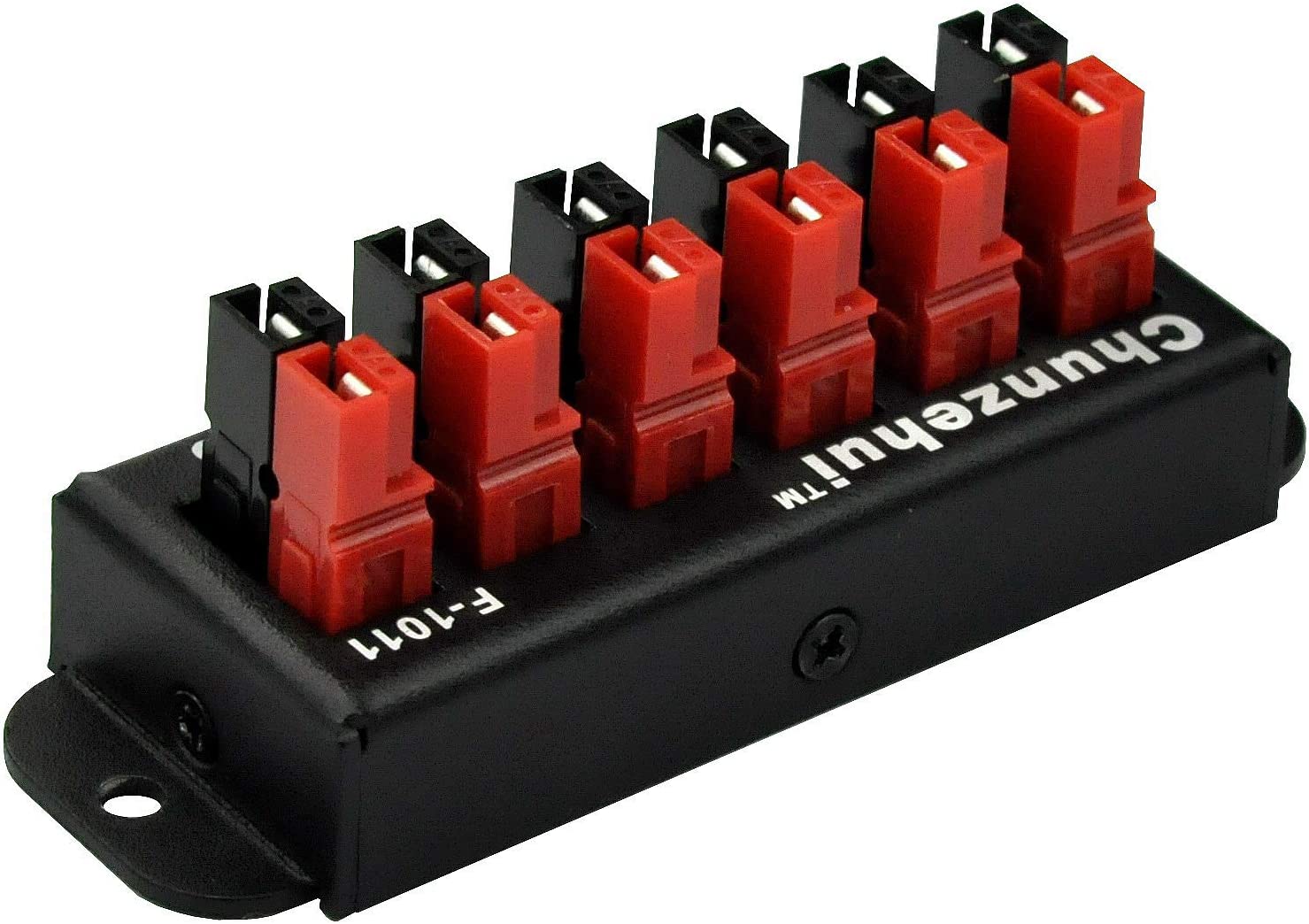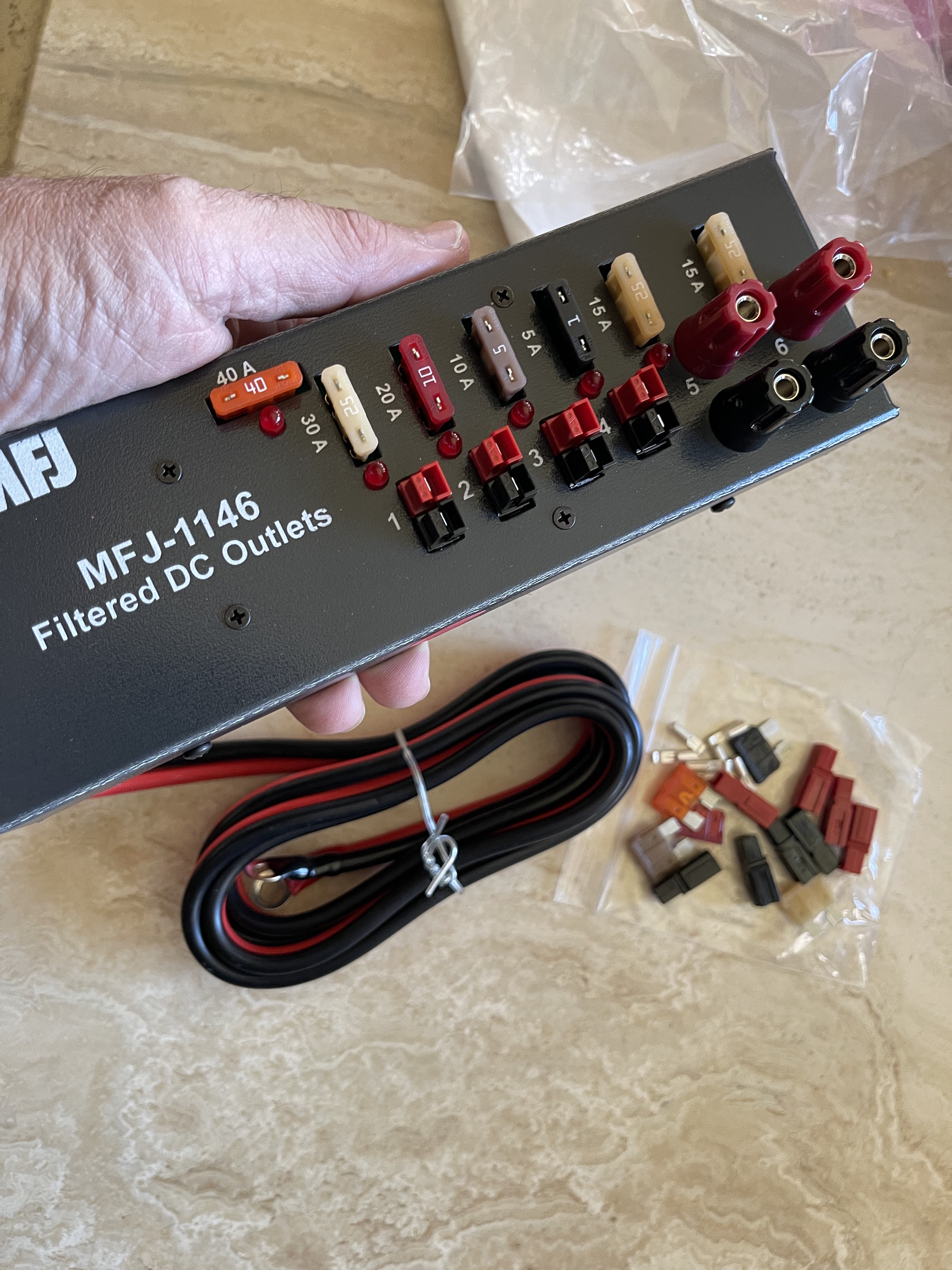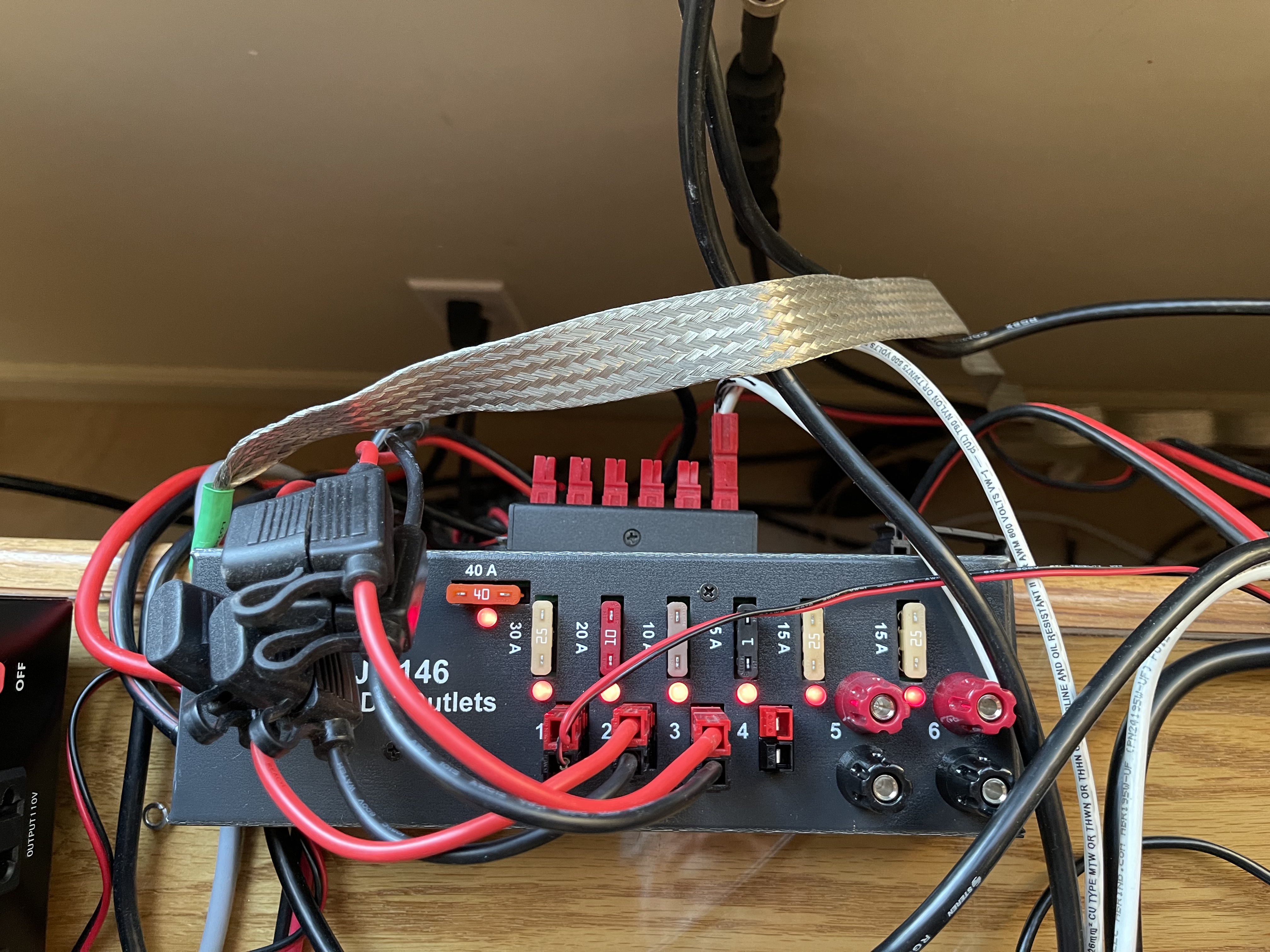Latest Awards
Short Takes #12: New MFJ RFI Reduction Powerstrip
Powering Your Shack
I've been using an Amazon power strip in my shack, which has honestly worked just fine for most purposes. It connects with my power supply and offers four slots for gear through the off-brand Powerpole connections. It was an easy purchase, and it has given me no issues over the years as its job has been a simple one. The Chunzehui powerstrip photographed below cost me about $35 shipped. I would rate it as a B- on build quality and an A- in user experience. It does what is supposed to do, but it doesn't step beyond that in any way. It is simply a power connection point. It was a bit shabby looking and has no fused outputs or LEDs. It's been OK despite not having "official" Anderson Powerpole connections.
 When you think about it, this important point between your power supply and your gear is probably a very good place to start the process of reducing RFI in your shack. Actually, I didn't think about it until I saw a new product release by MFJ which incorporates a similar Powerpole connection box along with some very nice RFI reduction circuitry.
When you think about it, this important point between your power supply and your gear is probably a very good place to start the process of reducing RFI in your shack. Actually, I didn't think about it until I saw a new product release by MFJ which incorporates a similar Powerpole connection box along with some very nice RFI reduction circuitry.
The MFJ Model 1146 provides six different filtered DC outlets to power your gear; four of these are for Powerpole-style connectors and two additional ports will accept either a banana plug input or bare wire. The unit comes with a very heavy duty cable to attach to your power supply and a baggie full of extra fuses with a few Powerpole connectors to get you going (not sure if they are "real deal" Anderson Powerpoles.) I've attached a photo of how it looks after being unpacked from the box and the only thing missing was an instruction sheet. Minimal instructions are available for this, via the link on the MFJ website. I'm impressed with the outward appearance of build quality on this unit (with one exception noted below). I did not open it and inspect the interior for this review. This unit retails for $225 and is available both from MFJ as well as the usual dealer network.
User Experience
 The MFJ is rated for noise suppression up to -60dBm, and supplies power to your equipment at up to a total of 40 amps at 13.8 volts. That sounds like enough for my purposes, so I immediately set about replacing the Chunzehui, making certain to check on the noise levels on my bands before disconnecting and installing the MFJ. It's real easy to suggest that because I live in a quiet, more rural part of Arizona that I could get away without any RFI filtering at all in my power supply and related gear. After all, what kind of RF can I see around a house in the middle of five acres of cacti? (As I found out, plenty).
The MFJ is rated for noise suppression up to -60dBm, and supplies power to your equipment at up to a total of 40 amps at 13.8 volts. That sounds like enough for my purposes, so I immediately set about replacing the Chunzehui, making certain to check on the noise levels on my bands before disconnecting and installing the MFJ. It's real easy to suggest that because I live in a quiet, more rural part of Arizona that I could get away without any RFI filtering at all in my power supply and related gear. After all, what kind of RF can I see around a house in the middle of five acres of cacti? (As I found out, plenty).
The Chunzehui had no accommodation for proper grounding, and I had to make do on my own. The MFJ clearly indicates that the model 1146 must have a solid ground connection and provides the connection to do so.
Immediately, I liked the fact that this unit has fused and LED lit DC outputs. Just what I needed in the shack is more cool LEDs! (Just kidding - my shack looks like a spaceship with LEDs, touch panels, and displays everywhere). RFI is a funny thing, however. One man's RFI might be reduced by this kind of filter, and your buddy's RFI may not even be touched. For me, I definitely noticed a reduction in noise across the bands. It wasn't as noticeable on the usually noisy 75 and 80 meter band, but it was sure noticeable on my 14 meter and 17 meter bands. I still don't know what it is that is producing RFI locally, outside that pesky dimmer switch on the light at my front door.
The MFJ1146 is apparently making that easier to deal with. It's not a huge decrease, but it's there and obvious. The impact of this may have been made within the first 15 minutes of operation, because I was able to pick out the DXpedition to Central Kiribati Islands at 18155 (T31TT) with a signal that may not have been audible before installing this new device. He gave me a 5-9 within moments of turning on my radio . . . always a nice sign for a new piece of gear!
 To Recap
To Recap
I like this unit and see the additional value provided by the RF noise reduction circuitry.
Which would I buy, if I were starting from scratch? The Amazon cheapie does the job and is certainly worth the $35, but in the business of pulling in weak signals, it's worth an upgrade on each component that may increase your chances. I'm down for the MFJ.
I rate the MFJ 1146 as a B+ in build quality due to paint coming off on the exterior case and along the bottom . . . it could be improved with a powder coated exterior finish. But because this is more of a "hidden" piece of gear in the shack, that matters little. More importantly, I give the unit an A+ for user experience, as it does what it advertises it will do, as it can bring more than power to your shack.
73 for now,
Dave

Have a comment? See what others are saying now in our Forum discussion!
|
|
Dave Jensen, W7DGJDave Jensen, W7DGJ, was first licensed in 1966. Originally WN7VDY (and later WA7VDY), Dave operated on 40 and 80 meter CW with a shack that consisted primarily of Heathkit equipment. Dave loved radio so much he went off to college to study broadcasting and came out with a BS in Communications from Ohio University (Athens, OH). He worked his way through a number of audio electronics companies after graduation, including the professional microphone business for Audio-Technica. He was later licensed as W7DGJ out of Scottsdale, Arizona, where he ran an executive recruitment practice (CareerTrax Inc.) for several decades. Jensen has published articles in magazines dealing with science and engineering. His column “Tooling Up” ran for 20 years in the website of the leading science journal, SCIENCE, and his column called “Managing Your Career” continues to be a popular read each month for the Pharmaceutical and Household Products industries in two journals published by Rodman Publishing. |
Articles Written by Dave Jensen, W7DGJ
- Trials & Errors #68 (11/04/25): The Value of YouTube vs. In-Person Elmers - November 4, 2025
- Trials & Errors #67 (10/10/25): Defending the Spectrum - October 11, 2025
- Trials & Errors Issue #66 (Sept 22 2005): High Water: Ham Radio's Role in 2004 Indian Ocean Tsunami - September 25, 2025
- Trials and Errors #65 (9/10/25): Defining the "Spirit of Ham Radio" - September 10, 2025
- Trials and Errors #64 (8/24/25): Tech-Focused Hams -- A Shot Across the Bow to ICOM, Yaesu and More - August 24, 2025
- Trials and Errors #63 (08/10/25): A Digital Radio "Plug 'n Play" Experience - August 11, 2025
- Trials and Errors #62: Celebrating Radio Innovation and Innovators - July 27, 2025
- Trials and Errors #61: The Carrington Event -- The "What If's" of our Sun's Activities - July 13, 2025
- Trials and Errors #60: How Shorthand Moved from Telegraphy to Ham Radio - June 30, 2025
- Trials and Errors #59: Misinformation Surrounding the Origins of "Morse" Code - June 10, 2025
- Trials and Errors #58: Tiny Radios and the Men Who Built Them - May 30, 2025
- Trials and Errors #57: Are We Erasing History? Thoughts on Clarence Tuska - May 16, 2025
- Trials and Errors #56: How I Earned My Radio Merit Badge But Almost Got Kicked Out of Scouts - May 4, 2025
- Trials and Errors #55: Radio's Role in the 1917 Halifax Explosion - April 29, 2025
- Short Takes #33: WSPR Receivers - April 24, 2025
- More articles by Dave Jensen, W7DGJ...



























